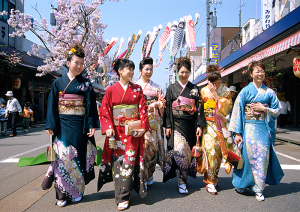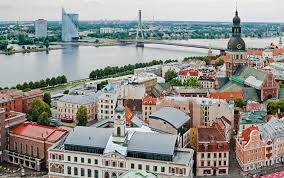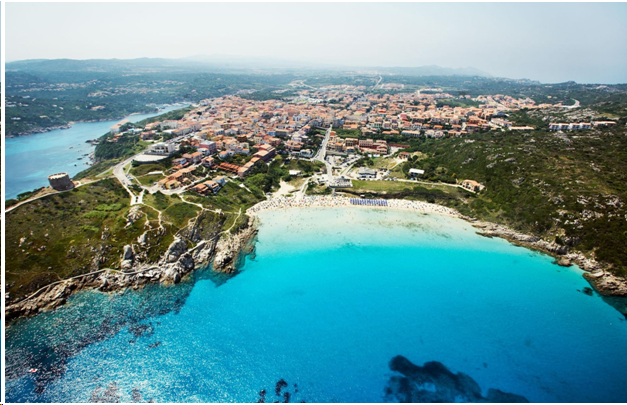Japan in the summer: what to see the tourist and what to do?
 A real traveler chooses the extraordinary. Imagine: an extraordinary culture, where hi-tech is successfully combined with centuries-old traditions, and “mass” images easily spread throughout the globe. And one of the most famous and recognizable gastronomy around the world. And even the language for which it was required to “invent” a separate language group. It is easy to guess that we are talking about Japan. However, not every tourist is ready to consider this country as a summer destination. And completely in vain! We will try to tell you what awaits those who decide to take a summer trip to Japan.
A real traveler chooses the extraordinary. Imagine: an extraordinary culture, where hi-tech is successfully combined with centuries-old traditions, and “mass” images easily spread throughout the globe. And one of the most famous and recognizable gastronomy around the world. And even the language for which it was required to “invent” a separate language group. It is easy to guess that we are talking about Japan. However, not every tourist is ready to consider this country as a summer destination. And completely in vain! We will try to tell you what awaits those who decide to take a summer trip to Japan.
So, what to do in Japan in the summer, and in general, what is summer Japan? First of all, including for the inhabitants of the country of the Rising Sun, summer is a period of numerous fireworks and festivals. They are carried out by every prefecture of the country and almost every city. We will name only the most famous of them.
So, if we talk about fireworks, on the fourth Saturday of July the Fireworks Festival is held on the Sumidagawa River, almost within Tokyo. The history of the festival is 270 years old and continues the traditions of ancient Japan of the Edo era. About 20 thousand colored volleys bloom the sky during this holiday, because the Japanese fireworks are not a ten-fifteen-minute salute, it is a fiery extravaganza that can last for hours.
Another famous fireworks festival will be held on August 14 in Hiroshima Prefecture, on Miyajima Island – more precisely, the festival itself takes place on the “water” territory of UNESCO’s treasure – Itsukushima Shrine. Its red torii gate stands in the middle of the sea, and access to them is possible only at low tide. Itsukushima Temple is only a little less well-known symbol of Japan than Mount Fuji, Sakura or Geisha …
Speaking of geishas, one cannot help but recall the ancient capital of Japan – Kyoto. And speaking of Kyoto, one can not help but recall the longest Japanese holiday Gion Matsuri, which takes place in this ancient city almost all of July. But its culmination is the Yamaboko Junko parade, a colorful procession of special carts, which takes place on July 17.
In another “link” of the Golden Ring of Japan and its second largest city, Osaka, the central festival is considered to be Tenjin, which falls on June 24-25. The holiday also involves a procession of many thousands. By the way, a deity, or rather a deified statesman, whose memory is remembered on this day, is considered the patron of science and study – it is not surprising that his holiday represents the very “soul of Japan.”
And we add that each such holiday – we named only the very most, but in reality there are dozens of them – a kind of quintessence of that “Japanese exotic” that is really worth seeing. These are rituals unusual for Europeans, spectators and participants in traditional kimonos – by the way, its summer version, yukata, is the easiest to put on and “use”, so a tourist can very well try it. And, of course, food – local gastronomy, from the point of view of the Japanese, is one of the first places in importance in tourism.
And almost at every holiday there is an opportunity to try local specialties in gastronomy. And not only at the holiday – an edible souvenir can be bought in almost every hotel – especially in ryokans, Japanese-style hotels, as well as in stores near any attraction in Japan. Probably, the Russian tourist will not refuse to bring home cookies with Matsumoto Castle, or, for example, with Fuji-san itself – Mount Fuji.
By the way, about the famous Japanese symbol. Summer is the traditional season of climbing Mount Fuji, and the most popular time for this is from July 1 to August 26. It is in the summer that the highest post office in Japan operates on the top of the mountain – from there you can send “material evidence” of your stay in Fuji to relatives and colleagues anywhere in the world. By the way, a funny fact – also there is the highest place in Japan where you can make a purchase by credit card – this is the FujisanHotel mountain hut at the mark of 3,400 meters. And we add – the season of climbing Fuji ends with a grandiose fire festival, which takes place in Fuji Yoshida on August 26 and 27.
As for another traditional symbol of Japan – sakura – yes, in the summer you will not see it. However, the flower seasons continue. In June hydrangea and irises take the “baton”, in July – lilies, in August – water lilies and bindweed … In any case, one can comprehend the aesthetics of “admiring nature” in Japan almost everywhere. The idea of the land of the Rising Sun as a “land of skyscrapers”, where there is no free space, is just as untrue as the land of traditional houses, where everyone is dressed in a kimono. In fact, by the number of forests and parks per capita, Japan is in the top ten countries of the world, and natural beauty begins literally “a stone’s throw” from the capitals. Moreover, the function of admiring nature is provided in Japanese-style hotels – ryokans, especially those that have their own hot springs.




